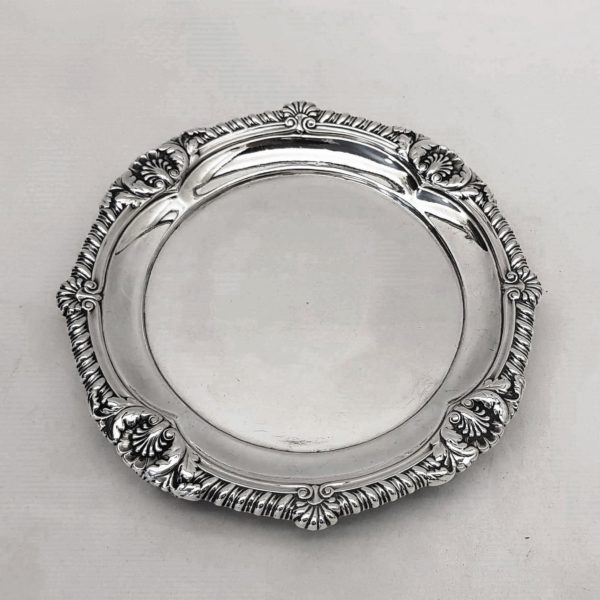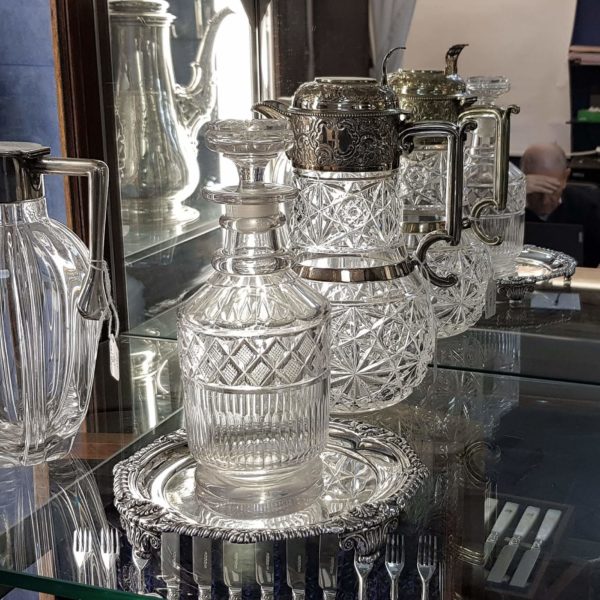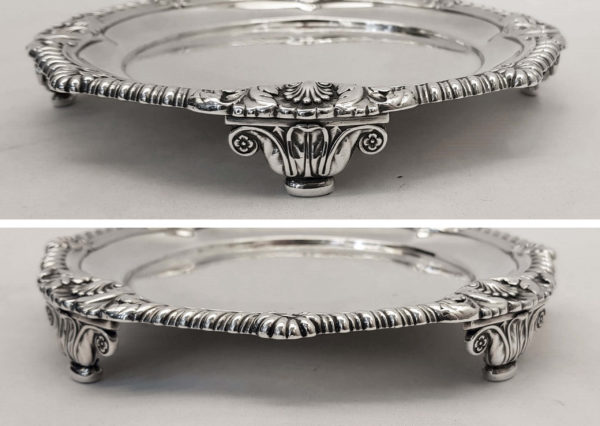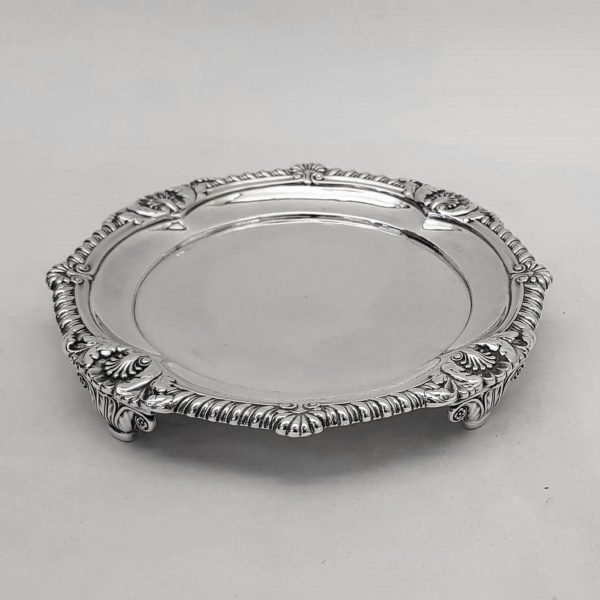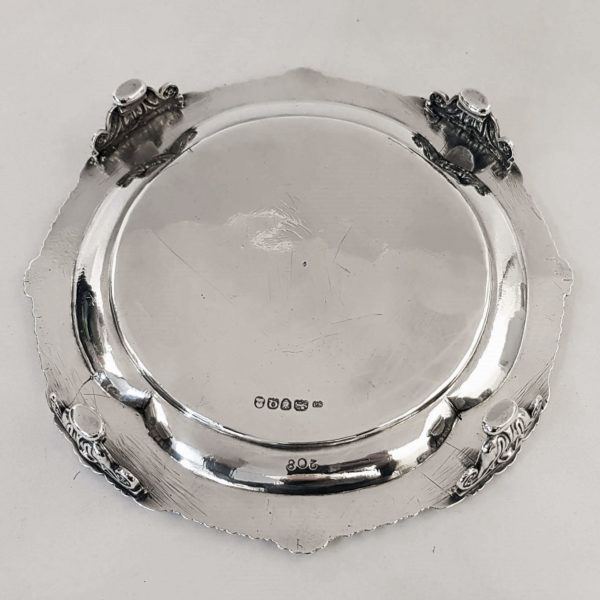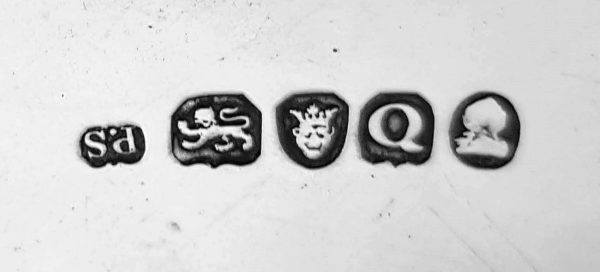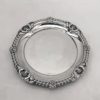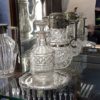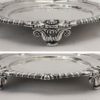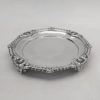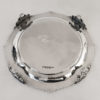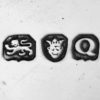George III Silver Salver
SOLD
Stock: 9953
Date: 1811
Maker: Paul Storr
Country: England
A handsome antique silver salver having a broad gadroon border interspersed with shell motifs. Nice chunky size and good weight....
Description
Description
A handsome antique silver salver having a broad gadroon border interspersed with shell motifs. Nice chunky size and good weight. Excellent quality as you’d expect by the prestigious English master silversmith Paul Storr. This type of small size tray is often referred to as a waiter and is ideal for use with small objects such as glasses and bottles.
Weight 411 grams, 13.2 troy ounces.
Diameter 18cm. Height 2.6cm.
London 1811.
Maker Paul Storr.
Sterling silver.
19th century.
Marks. Stamped underneath with a full set of English silver hallmarks and a manufacturing number 208.
Literature. The traditional form of salver with plain flat surfaces and small feet at the edge, rarely found before the reign of George I, was made in various forms such as round, rectangular, oval and octagonal and are an ideal starting off point for collectors of early silver.
The term “waiter” is not commonly used but relates to small examples less than 6 or 7 inches; these have become very popular now to stand a bottle or wine glass.
Condition
This salver is in very good condition. Thick gauge silver.
Maker Information
Maker: Paul Storr
Paul Storr (28 October 1770 – 18 March 1844 ), was one of the most talented silversmiths of the late Georgian period. Today his legacy of exceptionally well crafted silver can be found worldwide in museums and private collections. Son of Thomas Storr, a silver chaser, apprenticed 1785 to Andrew Fogelberg. First mark, as plateworker, in partnership with William Frisbee 1792. Second mark alone 1793. 3rd mark 1793. 4th mark 1794. 5th mark 1799. Subsequent 6th - 12th marks entered 1807-1834. By the beginning of the nineteenth century, established as one of London’s top silversmiths, he was producing commissions for Royalty. In 1801 he married Elizabeth Susanna Beyer with whom he was to have ten children. In 1807 Paul Storr entered into a working relationship with Philip Rundell and by 1811 was a partner, and managing the workshops for Rundell, Bridge & Rundell. During this period he kept his own marks and separate workshop, however Rundell, Bridge & Rundell were appointed Goldsmith in Ordinary to George III in 1804, and through them his reputation as a master silversmith grew. His talents lay in being able to transform ideas and designs from Rundell, Bridge & Rundell’s designers, William Theed II and later John Flaxman II. Rundell, Bridge & Rundell’s reputation grew due to the subsequent patronage of the Prince Regent (later George IV). Storr left RUNDELL, BRIDGE & RUNDELL in 1819 and went into partnership with John Mortimer, the assistant of a retiring retail goldsmith and jeweller, WILLIAM GRAY, of 13 New Bond Street. The firm was renamed STORR & MORTIMER and Storr concentrated on the manufacture of goods for Mortimer to sell in the shop at 13 New Bond Street. Storr and Mortimer, now manufacturing and retail goldsmiths, jewellers and silversmiths with an influential clientele, moved to 156, New Bond Street, in 1838. Storr retired to Tooting in 1839 and died in 1844.
Our Guarantee
Customer satisfaction is our primary concern
All silverware on our website is checked thoroughly prior to offering it for sale and every product listing contains a condition report and details of the silver hallmarks.
All items offered on our website include:
- Free Shipping Worldwide
- Tracked and Insured
- 14 day no quibble money back guarantee
- We are accredited members of LAPADA and conform to their strict professional standards
- We dispatch 1-3 days after receiving cleared payments
More detailed information about deliveries, returns and how to pay is available in the Help section at the bottom of this page.
